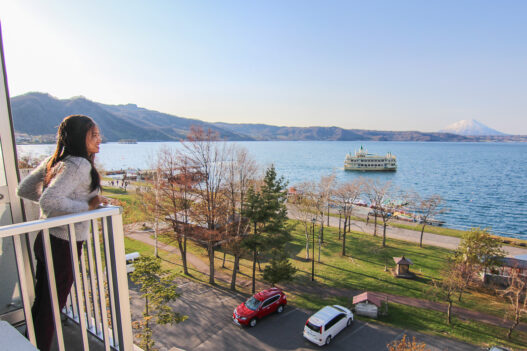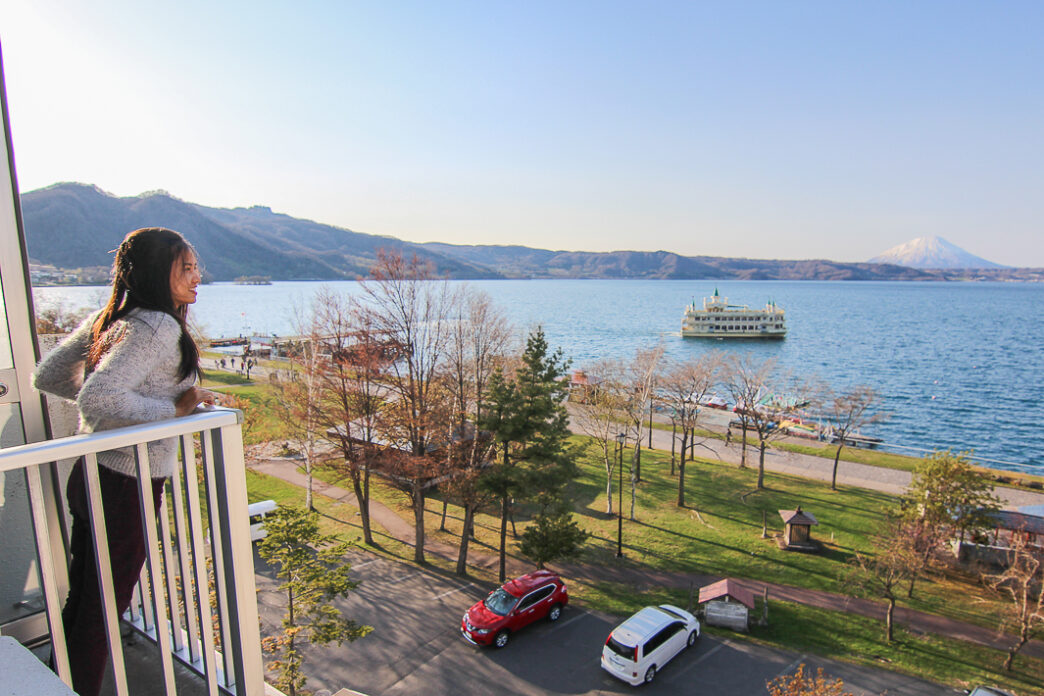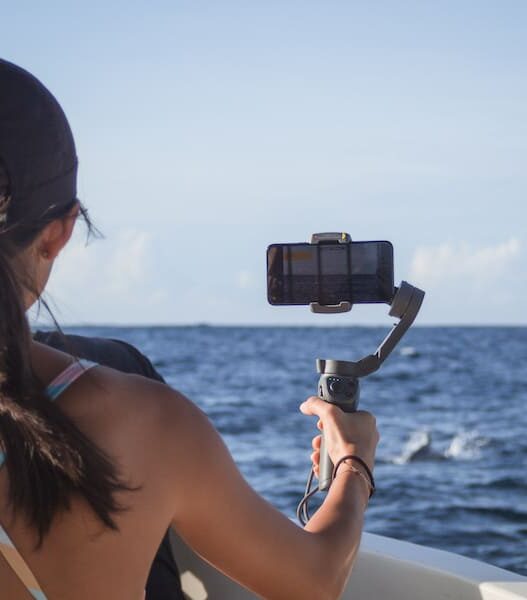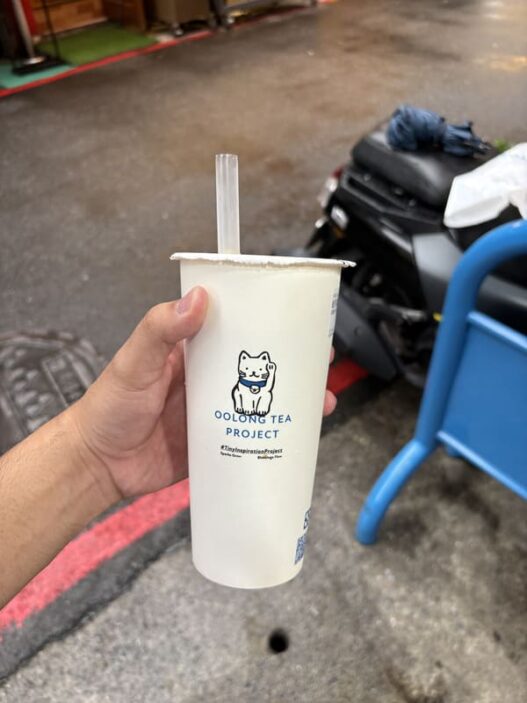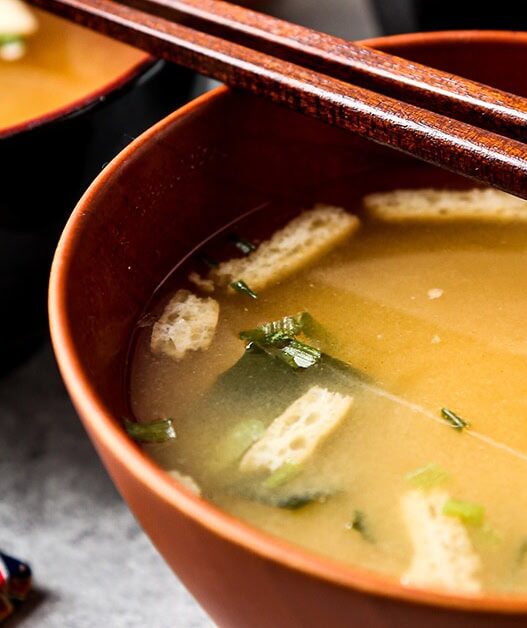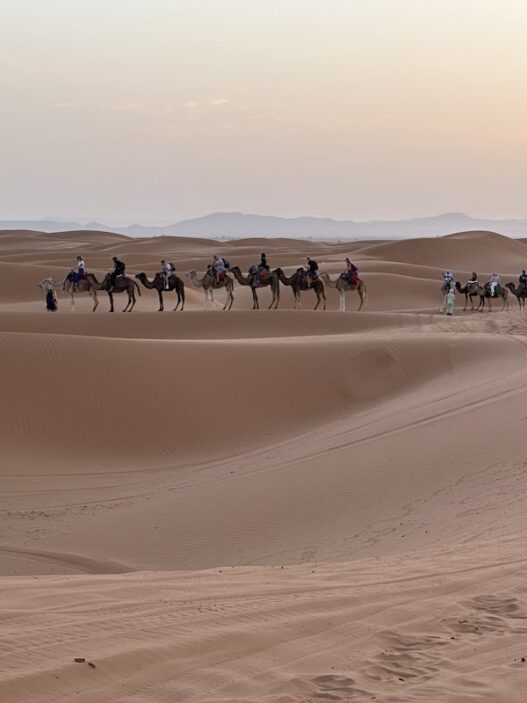If you're putting together a Japan itinerary, Hokkaido deserves a top spot. It's where snowy mountains meet steaming hot springs, and where quiet coastal towns offer a peaceful contrast to Japan's busy cities.
Hokkaido isn't just another part of Japan — it feels like a different world. From powdery snow to steaming onsens and wild flower fields, this northern island is full of contrasts. It's calm, raw, and wildly scenic.
In winter, the landscape turns into a snow-globe fantasy. The Sapporo Snow Festival in January is reason alone to visit — expect towering ice sculptures and magical city lights. Japan in January feels slower, quieter, and deeply beautiful.
Come summer, Hokkaido's cool weather and rolling landscapes offer the perfect escape from Japan's heat. Think hikes, lakes, lavender fields, and roadside cafes. If you're up for it, a Hokkaido road trip is the best way to see it all.
Before you go, don't forget to sort out your connectivity. Getting a Japan eSIM is the easiest way to stay connected for maps, bookings, and translations — no need to queue at the airport or swap physical SIMs.
This guide covers the best stops, seasonal tips, and travel ideas for every kind of traveller — solo, romantic, or family. Let's dive in.
Don't Miss Out On This 9-Day Hokkaido Itinerary
Catching these beautiful cherry blossoms in Sapporo, Hokkaido
Imagine snow-dusted forests, steaming outdoor onsens, crisp mountain air, and pastel fields of flowers stretching for miles. Hokkaido isn't just a destination—it's a mood.
Whether you're chasing cherry blossoms in spring or skiing fresh powder in winter, this 9 day Hokkaido itinerary is crafted for every kind of traveller—solo adventurers, couples, families, and even digital nomads on the move.
We've mixed iconic sights, off-the-beaten-path gems, and seasonal highlights so you can tailor your route based on what time of year you visit. If you've got fewer days, simply follow the first few legs: we'll also link shorter routes:
Let's break it down – day by day.
Day 1: Arrive In Sapporo
Hokkaido Shrine, Sapporo
By Car Distance: Approx. 45 km from New Chitose Airport to central Sapporo Duration: Around 1 hour via Hokkaido Expressway By Train Route: New Chitose Airport Station → Sapporo Station (JR Rapid Airport Line) Duration: About 40 minutes
Touch down in Sapporo, Hokkaido's lively capital and your gateway to the north. Whether you arrive by direct flight to New Chitose Airport (CTS) or take the scenic bullet train from Honshu, the city's compact layout makes it easy to explore on foot or via subway.
Kick off your Sapporo itinerary with a walk through Odori Park, especially stunning during the Sapporo Snow Festival in February or cherry blossom season in late April. Climb the Sapporo TV Tower for a panoramic view of the city.
Don't miss Nijo Market for fresh seafood bowls, grilled Hokkaido crab, and buttery uni—must-try Hokkaido food even if you're just here for the day. If you're travelling in winter, pop into the Sapporo Beer Museum for a warm indoor experience and a tasting flight.
Overnight In Sapporo
Stay at Sapporo Stream Hotel in Susukino or you can choose to stay near Odori, they're close to nightlife, food, and shopping.
Day 2: Otaru Day Trip
Otaru Canal
By Car Distance: Approx. 40 km from Sapporo to Otaru Duration: About 1 hour via Route 5 or Sasson Expressway By Train Route: Sapporo Station → Otaru Station (JR Hakodate Line) Duration: Around 30–35 minutes
Just 30 minutes from Sapporo, Otaru is one of Hokkaido's most charming towns — a mix of old-world canals, glass workshops, seafood markets, and romantic viewpoints.
Start your morning with a stroll along the Otaru Canal, lined with stone warehouses and vintage lamps. It's magical in every season — snow-dusted in winter, glowing with cherry blossoms in spring, and calm in summer evenings.
Book your Otaru Canal adventure here
Otaru Music Box Museum
Next, head to Sakaimachi Street, a preserved shopping lane full of cafés, souvenir shops, and glassware boutiques. Don't miss Kitaichi Glass for delicate crafts and the whimsical Otaru Music Box Museum, home to hundreds of intricate designs.
For lunch, dive into a seafood feast at Sankaku Market near the station — their fresh kaisen don (seafood rice bowl) with uni, scallops, or crab is legendary.
In the afternoon, ride the Tenguyama Ropeway for sweeping views of the port and Ishikari Bay. In winter, Tenguyama doubles as a small ski resort, while summer offers hiking trails and panoramic photo spots.
Overnight In Sapporo
You can return to Sapporo in the evening or stay overnight in Otaru at Granbell Hotel Otaru.
Day 3: Day Trip To Asahikawa And Asahiyama Zoo
By Car Distance: Approx. 135 km from Sapporo to Asahikawa Duration: Around 2 hours via Hokkaido Expressway By Train Route: Sapporo Station → Asahikawa Station (Limited Express) Duration: Around 1 hour 30 minutes
Wake up early for a day trip to Asahikawa, Hokkaido's second-largest city and home to one of the most beloved zoos in Japan. The journey itself is part of the charm—expect snow-covered landscapes if you're travelling in winter.
Start with Asahiyama Zoo, famous for its creative enclosures and close-up animal encounters. The wintertime penguin parade is the star attraction, where penguins waddle freely in the snow, delighting visitors of all ages. Walk through the glass tunnels to see seals glide overhead, or watch polar bears in their multi-level habitat.
After the zoo, warm up with a visit to Asahikawa Ramen Village, where you'll find eight of the city's top ramen shops under one roof. Asahikawa-style ramen—soy-based with a rich layer of pork fat—is a winter comfort food must.
If your timing aligns with early February, don't miss the Asahikawa Winter Festival. It's Hokkaido's second-largest snow celebration, featuring massive ice sculptures and fireworks.
Wrap up the day with a stroll down Heiwa Dori Shopping Park, Japan's first pedestrian street, lined with cosy cafés and local souvenir stores.
Overnight In Sapporo
Return by evening and stay at Hotel Route-Inn Sapporo Ekimae Kitaguchi near JR Sapporo Station for easy transit and dining options.
Day 4: Furano And Biei
By Car Distance: ~ 120 km from Asahikawa or ~ 200 km from Sapporo Duration: ~ 2–2.5 hours via Route 237/38 By Train/Bus Sapporo → Asahikawa (JR Limited Express, ~1.5 hours) → Furano (JR Furano Line, ~1 hour)
Local buses run between Furano and Biei.
Today's all about escaping into Hokkaido's heartland. Whether you're chasing colourful blooms in summer or a soft white blanket of snow in winter, Furano and Biei are nothing short of a dream.
Hop on a scenic train from Sapporo or Asahikawa, or hire a car rental in Hokkaido for more flexibility.
In summer, Furano's flower fields burst into colour. The most famous is Farm Tomita, where rows of lavender, poppies and sunflowers create a rainbow hillside. It's a paradise for photographers, couples, and solo wanderers alike.
In winter, Furano transforms into a ski and snowboarding hub. You can also enjoy snowmobiling, snowshoe trekking, or just soak in an outdoor onsen with snowy views.
Book your snowmobile trip here
Taking a tour to Biei's iconic Blue Pond also turns mystical under a snowy layer—it's magical year-round.
Pro tip: For photographers, Biei's Shirogane Blue Pond is best seen in early morning light or covered in fresh snow.
Hungry? Try omelette curry at Yuiga Doxon in Furano or pick up local cheese and ice cream from local vendors.
Overnight In Furano
Stay at Shin Furano Prince Hotel, which offers cozy rooms, ski access in winter, and easy drives to the flower fields in summer.
Day 5: Sapporo → Yoichi
By Car Distance: Approx. 60–80 km west of Sapporo (depending on stops) Duration: 1.5–2 hours via Route 5 By Train/Bus Sapporo → Yoichi (JR Hakodate Line, about 1 hour) + local buses to Shakotan
Day 5 takes you off the typical tourist path to Hokkaido's wild west coast — the Shakotan Peninsula — famous for its turquoise waters, rugged cliffs, and some of Japan's best uni (sea urchin).
Begin in Yoichi, where you can explore the Whisky Distillery (founded by Masataka Taketsuru, the father of Japanese whisky). The tour includes tastings of Nikka's award-winning blends, and Yoichi's apple orchards make for great seasonal stops too.
Book your guided Nikka Whisky Distillery tour here
Continue to the Shakotan Peninsula, where Cape Kamui offers a dramatic coastal walk with jaw-dropping views of the Sea of Japan. The water here is so clear it's nicknamed “Shakotan Blue.”
For lunch, indulge in the region's speciality — uni don (sea urchin rice bowl) — best enjoyed fresh at a seaside restaurant in Shakotan town or Bikuni.
Spend the afternoon exploring Cape Shakotan or Cape Ogon, both offering rugged scenery and quiet walking paths.
Overnight In Yoichi
Stay overnight at Zabocon Yoichi Villa Set within 2.1 km of Ranshima Beach and 16 km of Otaru Station.
Day 6: Explore Noboribetsu
Noboribetsu Date Jidaimura, Ninja Village
By Car Distance: ~80 km south of Sapporo Duration: ~1.5 hours via Hokkaido Route 36 By Train/Bus Sapporo → Noboribetsu (JR Muroran Line, about 1.5 hours) + short local bus or taxi to Jigokudani/Hell Valley
Leaving the bustle of the city behind, I made my way to Noboribetsu, a town that feels like it was built around nature's raw power. The journey itself was relaxing — trains run regularly from Sapporo via the Muroran Line, though driving is also a great option if you want more freedom to stop along the way.
My first stop was Jigokudani, or Hell Valley, a surreal volcanic crater where sulfuric steam rises dramatically from the earth. Walking along the wooden pathways, I felt as though I'd stepped into another world — the sound of bubbling pools and the smell of minerals filling the air.
From there, I followed a short trail through the forest to Oyunuma Brook, a natural hot stream where you can roll up your pants and soak your feet in warm, mineral-rich waters. It was such a calming, grounding moment in the middle of wild scenery.
Traditional ryokan
Later in the day, I checked into a traditional ryokan and experienced one of Noboribetsu's famous hot spring baths. There's nothing quite like easing into a steaming onsen while surrounded by mountains, especially after a day of walking.
Many ryokan also serve kaiseki dinners — seasonal multi-course meals that are as beautiful to look at as they are to eat. Dressed in a soft yukata robe, I felt completely immersed in Japanese hospitality and tradition.
Overnight In Noboribetsu
Stay at Hotel Mahoroba to enjoy hot springs and a kaiseki dinner, or return to Sapporo for the night. If you head back, I recommend staying near JR Sapporo Station or Susukino for easy transit connections and plenty of dining options.
Day 7: Visit Lake Toya And Scenic Surrounds
View from our hotel!
By Car Distance: ~ 120 km from Noboribetsu → Lake Toya Duration: ~ 1.5–2 hours via Route 276 By Train/Bus Noboribetsu → Lake Toya Station (JR Muroran Line, ~ 45 minutes) Local buses connect the station to Mount Usu Ropeway and Toyako Onsen.
I started my morning with a scenic ride to Lake Toya, a stunning caldera lake known for its glassy waters and the volcanic peaks that rise all around it. The journey itself felt like part of the adventure, with rolling hills and glimpses of the lake appearing as I got closer. Driving is a wonderful option here too if you want the freedom to stop and explore at your own pace.
My first stop was the Mount Usu Ropeway, which carried me up to sweeping views of Lake Toya and the Pacific Ocean beyond. From the summit, I wandered along trails that led past steaming craters left behind by past eruptions. It's incredible to see how this land has been shaped — and reshaped — by volcanic power.
In the afternoon, I headed to Toyako Onsen, a quiet lakeside hot spring town. Many of the hotels here have open-air baths overlooking the lake, and slipping into one while taking in the view is an unforgettable experience. If you visit in summer, don't miss the Lake Toya Fireworks Festival, held every evening from late April to October — the reflections on the lake make it magical.
Overnight In Lake Toya
Stay at Toya Sun Palace Resort & Spa on the lakeside to enjoy hot springs and fireworks by the water, or return to Sapporo for the night. If you head back, I suggest staying near JR Sapporo Station or Susukino for convenience and plenty of dining choices.
Day 8: Discover Hakodate
Many slopes to explore!
By Car Distance: ~200 km from Lake Toya → Hakodate Duration: ~3–3.5 hours via Route 5 By Train/Bus Lake Toya → Hakodate (Limited Express Super Hokuto, ~3 hours)
I caught a morning train to Hakodate, one of South Hokkaido's most scenic and historic port cities. The ride itself was easy and scenic, setting the tone for a day full of exploration.
My first stop was Goryokaku Park, a unique star-shaped fort that comes alive with cherry blossoms in spring. Climbing the Goryokaku Tower gave me sweeping views of the fort and the city beyond — a perspective that made me appreciate its history even more.
From there, I wandered through the Motomachi District, where European-style churches and colonial buildings tell the story of Hakodate's trading past. The mix of cultures here feels unlike anywhere else in Hokkaido.
As evening fell, I went and explore more of Mount Hakodate. Whether you go by ropeway or car, the view from the top is breathtaking — the city glowing with lights and surrounded by the ocean on both sides. It's a view I'll never forget.
For dinner, I explored the Hakodate Morning Market area, which transforms in the evening into a lively spot for fresh seafood and street eats. Sampling local delicacies with the energy of the night market around me was the perfect way to end the day.
If you're keen on slower travel or local living insights, don't miss my experience of living in the Japanese countryside — much of which was inspired by places like Hakodate.
Book your Mount Hakodate adventure here
Overnight In Hakodate
Stay at La Vista Hakodate Bay, located near the bay area with comfortable rooms and easy access to sightseeing.
Day 9: Wind Down In Noboribetsu
By Car Distance: ~ 100 km from Hakodate → Noboribetsu Duration: ~ 2 hours via Route 5 By Train/Bus Hakodate → Noboribetsu (Limited Express Hokuto, ~ 2 hours) To attractions like Noboribetsu Date Jidaimura and Bear Park.
On my last day in Hokkaido, I returned to Noboribetsu for one final slow-paced adventure before heading to the airport. Instead of rushing, I allowed myself to truly enjoy the small details of this famous hot spring town.
This time, I skipped the longer hikes and headed straight for Noboribetsu Date Jidaimura, a samurai and ninja-themed historical park. Wandering past Edo-style houses, I watched cultural shows and even tried my hand at a few traditional games. It was playful, fun, and surprisingly educational.
Afterwards, I stopped by the Noboribetsu Bear Park, reached by a short ropeway ride. Watching Hokkaido brown bears up close was both fascinating and humbling, and the views of the valley from above were worth the ride alone.
Before leaving, I couldn't resist one last soak in an onsen — the perfect way to relax my body after nine days of exploring. I treated myself to a creamy Hokkaido milk soft serve before catching my transfer to New Chitose Airport, reflecting on how much this journey had given me.
Overnight Near New Chitose Airport
Stay at Air Terminal Hotel, ideal for free airport shuttles and a stress-free departure the next day.
What To Eat In Hokkaido, Japan
Sankaku Fish Market fresh seafood
Hokkaido isn't just a feast for the eyes—it's a paradise for food lovers too. Thanks to its cool climate, rich soil, and surrounding seas, the island produces some of Japan's freshest and most flavourful ingredients.
From the seafood-rich coastal towns to the fertile farmlands inland, every region of Hokkaido has its own specialities worth seeking out. Think buttery corn from Furano, fresh milk and cheese from the countryside, and sashimi straight off the fishing boats in Hakodate and Otaru.
Whether you're slurping steaming bowls of Hokkaido ramen, indulging in creamy dairy desserts, or cracking into giant snow crab, this island will ruin you for food elsewhere.
Must-Try Dishes In Hokkaido, Japan
Soup curry in Sapporo
- Hokkaido Ramen: Each region puts its own spin on ramen. Try miso ramen in Sapporo, shio (salt-based) in Hakodate, and shoyu (soy-based) in Asahikawa.
- Kaisendon (Seafood Donburi): A bowl of vinegared rice topped with raw seafood like salmon roe, scallops, uni (sea urchin), and crab. Best savoured fresh at morning markets in Hakodate or Sapporo's Nijo Market.
- Jingisukan (Genghis Khan): Barbecued mutton, grilled on a dome-shaped skillet. It's a Hokkaido favourite you'll often find in beer halls.
- Soup Curry: A spicy, soupy curry served with vegetables and meat. Try it in Sapporo for the most authentic experience.
- Hokkaido Dairy: From soft serve ice cream in Furano to baked cheese tarts in Otaru—dairy in Hokkaido is on another level.
- Kani (Crab): Winter brings an explosion of snow crab, king crab, and hairy crab. Look for seasonal crab buffets in Sapporo and Hakodate.
Where To Eat In Hokkaido, Japan
Morning market Hakodate
- Sapporo: Visit Ramen Alley in Susukino for iconic miso ramen. For street eats and sweets, Nijo Market is a must.
- Hakodate: Head to the Hakodate Morning Market for fresh kaisendon and squid sashimi pulled straight from the tanks.
- Niseko: Aside from ski slopes, Niseko has gained fame for its international dining scene—think wood-fired pizzas, Japanese-French fusion, and farm-to-table dishes.
Dive deep into the local food experience here
8 Unmissable Things To Do In Hokkaido, Japan
Hokkaido offers a wide range of experiences that change with the seasons—whether you're chasing powdery slopes, soaking in hot springs, or admiring flower fields. Below are the best things to do in Hokkaido, with options for every traveller type and interest.
1. Experience The Sapporo Snow Festival
Held every February, the Sapporo Snow Festival transforms Odori Park and Susukino into a magical landscape of giant snow and ice sculptures. With themes ranging from anime to global landmarks, this iconic event attracts millions annually.
2. Ski Or Snowboard In Niseko
Skiing in Japan!
Niseko is Hokkaido's crown jewel for winter sports. Known for its light powder snow and world-class facilities, it's a dream for skiers and snowboarders. Whether you're a beginner or expert, the slopes in Grand Hirafu and Hanazono offer breathtaking views of Mount Yotei.
Book your Niseko Ski adventure here
3. Relax At Lake Toya And Mount Usu
Lake Toya, Mount Usu climb
Located within Shikotsu-Toya National Park, Lake Toya is a serene caldera lake with beautiful views and relaxing onsen towns. Ride the Usuzan Ropeway for panoramic views of the volcano and lake. Sunset cruises and fireworks shows in summer make it a year-round destination. I recommend pairing it with a day trip for added convenience.
Book a guided day trip here
4. Visit Asahiyama Zoo In Asahikawa
This is not your average zoo. Asahiyama Zoo is famous for its unique enclosures that let visitors see animals up close—from penguins waddling in winter parades to polar bears diving through glass tunnels. It's family-friendly and perfect for all seasons.
What sets it apart is the focus on animal behavior—think penguins parading through the snow or seals gliding through glass tunnels overhead.
Book your entry tickets and transport combos here
5. Explore Furano And Biei's Flower Fields
Come summer, Furano and Biei turn into a riot of colour with lavender fields, rolling flower hills, and quaint farms. Visit Farm Tomita for the iconic purple landscapes, or rent a car for a scenic ride through Patchwork Road. These are the top spots for photographers and couples seeking a romantic escape.
Book your Farm Tomita adventure here
6. Go Wildlife Spotting In Shiretoko National Park
One of Japan's most unspoiled regions, Shiretoko is home to brown bears, foxes, and drift ice in winter. Boat tours offer wildlife sightings, while hiking trails lead to remote waterfalls and hot springs. It's a must for nature lovers and fits perfectly into a longer 9 days Hokkaido itinerary.
7. Visit A Local Farm Or Dairy In Tokachi
Hokkaido is Japan's agricultural heartland. A visit to a local dairy farm in Tokachi lets you sample fresh milk, cheese, and ice cream straight from the source. Many farms offer workshops, tractor rides, and even petting zoos—ideal for families with kids.
8. Soak In Hokkaido's Famous Onsens
Nothing beats stepping into a steaming onsen surrounded by snow. Hokkaido is dotted with hot spring towns like Noboribetsu, Jozankei, and Yunokawa, each offering outdoor baths with mountain or sea views.
After a day of skiing or sightseeing in the cold, soaking in mineral-rich waters is the perfect way to unwind. For a truly unique experience, try an open-air rotenburo while snowflakes fall around you—it's Hokkaido winter magic at its best.
Book your open-air rotenburo experience here
Best Time To Visit Hokkaido, Japan
One of the most compelling reasons to visit Hokkaido is how dramatically the island transforms across the seasons. Whether you're drawn by the powdery snow, pastel spring blooms, lush green summer landscapes, or fiery autumn foliage—Hokkaido offers year-round magic for every type of traveller.
Hokkaido In Winter (December To February)
Hokkaido in January
Winter is perhaps the most iconic season in Hokkaido. From skiing in Niseko and Rusutsu to soaking in outdoor onsen surrounded by snow, this is peak time for winter lovers. Don't miss the Sapporo Snow Festival, penguin parades at Asahiyama Zoo, and drift ice cruises in Abashiri.
If you're travelling in the coldest months, pack thermals, waterproof boots, and hand warmers.
Hokkaido In Spring (March To May)
Nakajima Park in spring
Spring brings cherry blossoms slightly later than mainland Japan – making it perfect for sakura chasers.
Spots like Matsumae Park, Goryokaku Park in Hakodate, and Maruyama Park in Sapporo bloom in late April to early May. You'll also catch tulips and early greenery in Furano.
Spring in Japan is chilly, especially at night, so a light jacket or layered clothing is essential.
Hokkaido In Summer (June To August)
Summer in Hokkaido is refreshingly cool, offering an escape from Japan's humid mainland. The season is famous for its flower fields in Furano and Biei, hiking in Daisetsuzan National Park, and summer festivals like the YOSAKOI Soran in Sapporo.
Pack a light windbreaker, breathable clothing, and sunscreen. Be sure to book your flower field tours in July!
Hokkaido In Autumn (September To November)
Autumn arrives early in Hokkaido. By late September, the mountains of Sounkyo Gorge and
Daisetsuzan turn brilliant red and gold. Cities like Hakodate and Otaru follow in October. It's one of the best seasons for sightseeing and food—especially Hokkaido's famous harvest produce.
Bring warm layers and a rainproof outer shell for sudden showers.
How To Get To Hokkaido, Japan
Getting to Hokkaido is easier than you might expect. Whether you're flying, taking a train, driving, or booking a ferry, there's a route that suits every budget and travel style.
By Flight – The Fastest Way
Flying to Sapporo is the most direct option. New Chitose Airport (CTS) is Hokkaido's main gateway, with frequent domestic flights from Tokyo, Osaka, and Fukuoka, and even international routes from Seoul, Taipei, and Bangkok.
If you're short on time or starting from further south, booking a flight is often the most efficient. Budget airlines like Peach Aviation, Jetstar Japan, and ANA often have great deals. Make sure to compare flight prices early, especially in peak seasons like winter and cherry blossom season.
Don't forget to check off essential prep in this Pre-Travel Checklist before flying internationally.
By Train – Scenic And Comfortable
If you don't prefer a slower route then the Hokkaido Shinkansen makes travelling by train easy. You can ride the bullet train from Tokyo to Hakodate, then connect to other cities like Sapporo via local or limited express trains.
The ride through the Seikan Tunnel (under the sea!) is an experience in itself. If you've got a Japan Rail Pass, this is a great way to make the most of it. It's ideal for digital nomads and long-term travellers moving across Japan at a relaxed pace.
Reserve long-distance trains in advance to ensure smooth travel during busy periods.
By Car – Freedom To Explore
Driving to Hokkaido gives you full flexibility, especially if you want to visit rural areas and offbeat attractions. If you're starting from Honshu, you can cross over using the Seikan ferry or tunnel, depending on your route.
Once on the island, you'll find well-maintained highways and scenic backroads that connect major cities to hidden mountain towns and coastal spots. Having your own car means you can stop at lesser-known onsens, viewpoint cafés, flower fields, or even roadside farmer stalls that buses simply don't reach. It's the kind of freedom that turns a good trip into a memorable one.
Make sure your international driving permit is sorted and book your rental car early.
By Ferry – For The Adventurous
For a unique journey, consider taking a ferry to Hokkaido. Long-distance ferries connect Hokkaido to Aomori, Niigata, and even Tokyo, offering overnight cabins, sea views, and onboard dining.
It's slower than flying or taking the train, but it's part of the adventure – especially if you're bringing a car or travelling light on time.
Getting Around Hokkaido
Hokkaido is vast, scenic, and surprisingly easy to navigate—if you choose the right transport method for your trip. Whether you're chasing ski slopes, flower fields, or foodie finds, knowing how to get around Hokkaido can shape your entire itinerary.
Public Transport
Hokkaido's rail and bus network covers most major cities and towns. The Japan Rail Pass and regional Hokkaido JR Pass offer excellent value, especially for longer trips. You can ride bullet trains, limited express, and even some buses with a single pass.
If you're sticking to popular routes like Sapporo–Otaru–Hakodate, the JR network is efficient and scenic. You can compare rail pass options here.
Want offline access to your route? Learn how to export your Google map itinerary before you go.
Renting A Car
Public transport works well, but renting a car in Hokkaido gives you full freedom. Many scenic gems like Furano flower farms, Blue Pond, or Lake Toya are easier reached by car. It's the top choice for digital nomads, families, or anyone planning a flexible, off-the-beaten-path adventure.
Driving is smooth and generally safe in Hokkaido, with well-maintained roads and polite drivers.
However, most road signs are in Japanese, with only major directional signs and highway exits showing English translations — so planning a Google map route (or a GPS with English language settings) is essential for navigation.
One thing I loved about having a car in Hokkaido was the spontaneity it allowed. I could stop at roadside viewpoints, sample fresh local produce from small stalls, or detour to a hidden onsen tucked away in the mountains — experiences that would have been tricky to fit into a public transport schedule.
Book early during peak seasons, and make sure to carry an international driving permit. Most rental companies operate near major airports and train stations.
Browse rental options and prices easily for Sapporo here
Buses
For budget-friendly travel, long-distance buses are a solid choice. They connect cities like Sapporo, Asahikawa, Obihiro, and even ski resorts. While they're slower than trains or cars, the savings can be worth it.
Here are some popular bus routes in Hokkaido if you're considering taking buses:
Sapporo to Asahikawa – Frequent departures and a great way to reach Asahiyama Zoo. The ride takes about 2 hours.
Sapporo to Hakodate – An affordable alternative to the train for reaching the southern port city. Takes around 6 hours.
Sapporo to Furano and Biei – Direct routes available in summer for flower fields and hiking trails. Approx. 2.5–3 hours.
Obihiro to Kushiro – A scenic route across eastern Hokkaido; good for spotting lakes and wetlands. It takes about 3.5 hours.
Some overnight buses include reclining seats and onboard toilets – ideal if you're stretching your budget.
You can also check for bus schedules and book routes to avoid language barriers.
Best Way To Get Around Hokkaido
If you're travelling light and staying near cities, public transport and JR passes are a win. Buses and trains are reliable, safe, and well-connected to popular towns and landmarks—ideal for solo travellers or anyone on a tighter budget.
But if your plans include national parks, nature spots, or hidden onsens, a rental car in Hokkaido gives you the upper hand. Personally, I'll always prefer renting a car, especially if you're travelling in a group!
Travel Tips For Visiting Hokkaido, Japan
Whether you're visiting for the powder snow, lavender fields, or food scene, a few smart tips will make your Hokkaido itinerary smoother, safer, and more enjoyable.
Internet And SIM Cards In Hokkaido
Most hotels and cafés offer free Wi-Fi, but rural regions like Furano or Shiretoko may have spotty coverage. To stay connected, consider using a travel eSIM or portable Wi-Fi router. If you're hopping cities or working remotely, this is essential.
ATMs, IC Cards, and Cash
Japan remains largely cash-based, especially outside major cities. You'll find 7-Eleven ATMs that accept international cards in most towns, but don't count on small shops or restaurants accepting credit.
Get a Suica or Kitaca IC card to tap in and out of trains and convenience stores.
Cultural Etiquette To Know
Hokkaido may be more relaxed than Tokyo, but Japan's cultural customs still apply. Always remove shoes indoors, queue politely, and speak quietly in public transport. Tipping isn't expected. Learn a few basic phrases—locals appreciate the effort, especially in remote areas.
What To Pack For Hokkaido
The weather can change quickly, so layers are key. Winters require thermal innerwear, snow boots, and down jackets.
Summers are cooler than Tokyo but still warm—pack sun protection and a light jacket for evenings.
Don't forget reusable chopsticks, an umbrella, and a small towel (many restrooms lack hand dryers).
Useful Japan Apps And Travel Tools
Having the right travel tools can make your Hokkaido itinerary run like clockwork. From navigating remote towns to managing train schedules, these apps help you stay informed and stress-free—whether you're exploring solo, as a couple, or with family.
Google Maps is incredibly reliable across Hokkaido, even in more rural areas like Biei or Lake Akan.
Just make sure to download offline maps in advance in case you lose signal during long drives or in the mountains. For extra convenience, learn how to export your Google Map itinerary for offline use.
Public Transport Apps
These are your go-to apps for navigating Japan's extensive train system. Navitime Japan offers detailed public transport suggestions in English, including bus schedules, walking routes, and last-train times. Hyperdia used to be a favourite for train planning, and while now limited, it's still good for timetable cross-checks.
Use these tools alongside 12Go for booking long-distance travel, ferries, and buses in advance.
Suica And IC Card Apps
Suica cards (or Kitaca in Hokkaido) are your tap-and-go solution for trains, vending machines, and convenience stores. You can now load a virtual Suica on your phone using Apple Wallet or Google Pay, making it super convenient if you prefer to travel light.
There's a quiet kind of magic to Hokkaido—the kind that creeps into your heart without a grand announcement.
Maybe it's the way the morning mist hugs the flower fields of Biei, or how the snowflakes in Niseko fall with the silence of a poem. Whatever it is, Hokkaido doesn't just ask for your attention—it earns it.








